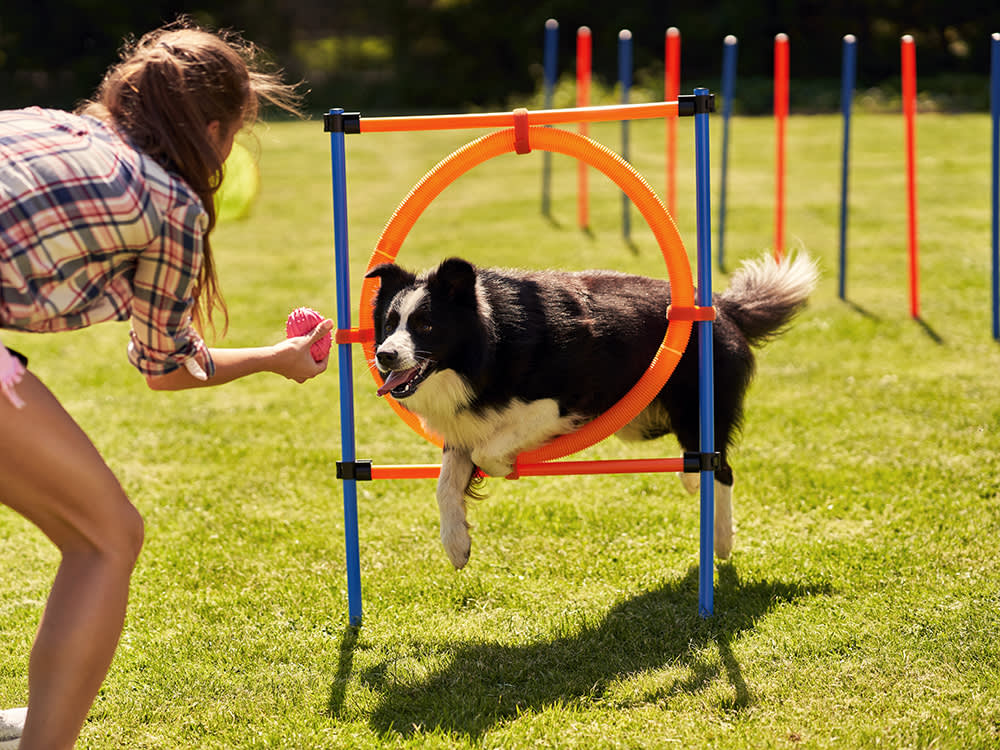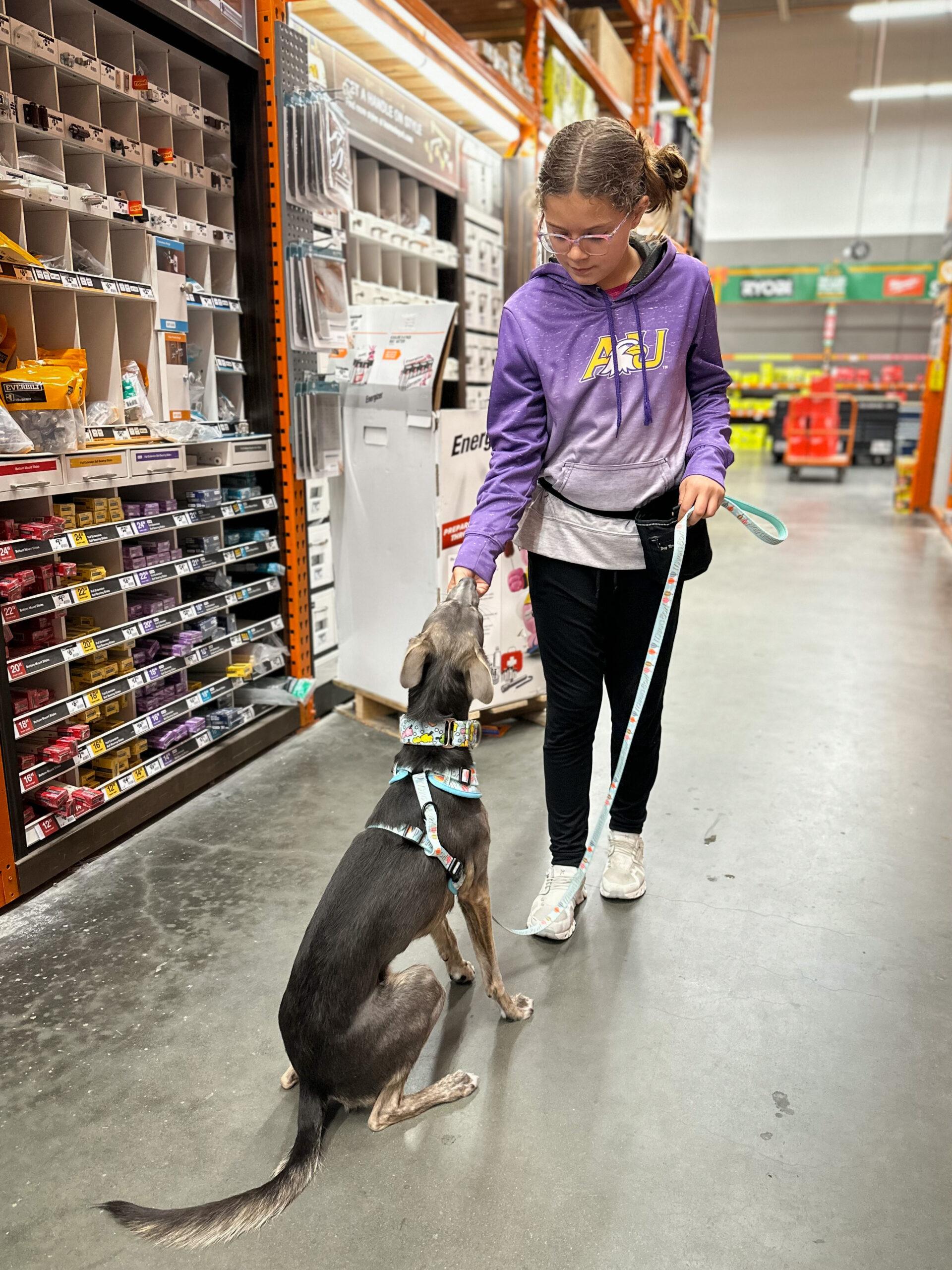Dog Training for First-Time Pet Owners: What You Need to Know
Dog Training for First-Time Pet Owners: What You Need to Know
Blog Article
Novice's Overview to Successful Canine Training in your home
Efficiently educating a pet dog in the house requires a nuanced understanding of canine actions and reliable communication strategies. Developing clear training goals, making use of high-quality benefits, and keeping consistency throughout relative are crucial components. Furthermore, incorporating training into day-to-day regimens can enhance both engagement and retention. Many amateur fitness instructors run into obstacles that might impede progression. To navigate these intricacies properly, it's essential to explore several vital facets that can change your technique and cause an unified connection with your pet dog. What essential principles should every newbie grasp to make certain success?
Understanding Dog Behavior
Understanding pet habits is crucial for efficient training and cultivating an unified relationship in between humans and their canine friends. Pet dogs interact mainly through body movement, articulations, and faces, making it critical for owners to interpret these signals properly. Identifying habits such as tail wagging, roaring, or trembling can give understandings right into a pet dog's psychological state and objectives.

Common behavioral problems, such as hostility, stress and anxiety, or too much barking, commonly come from misconceptions or unmet needs. Observing and resolving these issues quickly can avoid acceleration and ensure a positive training experience. By promoting a deep understanding of pet dog habits, owners can customize their training approaches to fit their canine friends, ultimately resulting in a well-behaved and happy animal.
Necessary Training Tools
A well-appointed training area can considerably improve the efficiency of pet training in your home. Vital training tools guarantee that both the pet and the fitness instructor can involve in productive sessions that foster learning and bonding.

Buying a strong leash and a comfortable, well-fitting collar or harness is important for security and control. These tools help develop limits and make certain the pet dog remains safe throughout training. Additionally, a designated training area, totally free from diversions, aids concentration for both the pet dog and the instructor.
Training help such as training pads, cones, or agility equipment can additionally enhance the experience by introducing range and challenges. Finally, having a note pad or electronic app for tracking progress can be very useful, permitting you to note successes and locations for improvement. Making use of these important tools will develop a favorable training setting and lay the foundation for efficient knowing.
Producing an Educating Routine
Developing a regular training routine is necessary for efficient pet training in the house. A well-structured routine not just assists in enhancing preferred habits but likewise provides your dog with a feeling of safety and security and predictability. To produce a reliable training routine, start by identifying specific training goals, such as basic commands, leash strolling, or house-training.
Pick a designated time each day for training sessions, preferably when your pet is responsive and alert. Procedure should be brief, about 5 to 15 mins, to maintain focus and avoid tiredness. Uniformity in timing and setting will boost your dog's understanding experience.
Incorporate training right into daily activities to strengthen abilities. Method commands during strolls or nourishment, which integrates learning right into all-natural regimens. Additionally, continue to be flexible and readjust the regular as essential, suiting your canine's energy degrees and mood.
Positive Support Techniques
Positive support strategies are fundamental to reliable pet training, advertising desired behaviors through incentives rather than punishment. This approach uses positive stimuli, such as deals with, praise, or play, to encourage pets to repeat specific activities. The foundation of this method is timing; benefits must be provided right away adhering to the preferred actions to develop a clear organization.
When executing favorable support, it is vital to choose benefits that are motivating for your canine. High-value treats, such as little items of hen or cheese, can be particularly effective throughout training sessions. In addition, differing the incentives can preserve your pet dog's passion and enthusiasm.
Start with straightforward commands, like "sit" or "stay," and gradually progress to more intricate jobs. Consistency is key; guarantee that all member of the family make use of the same commands and benefit systems to prevent confusion.
In addition, it is crucial to continue to be patient and avoid irritation. Pets, like humans, learn at their own rate. By fostering a supportive training setting through favorable reinforcement, you can improve your canine's learning experience while reinforcing the bond in between you and your furry buddy, preparing for successful training end results.
Typical Training Difficulties
While this post training a pet dog at home can be a satisfying experience, it frequently comes with a collection of usual challenges that can test both persistence and consistency. One prevalent issue is disturbance. Canines may become easily averted by sounds, activities, or also fragrances in their setting, making it difficult to preserve their focus during training sessions.
An additional difficulty is disparity in commands and reinforcement. It can confuse the canine and impede progress if family members utilize various cues or rewards. Establishing a unified technique is vital for reliable interaction.
In addition, pet dogs can experience aggravation or stress, especially if they do not understand what is anticipated of them. This can bring about unwanted behaviors, such as chewing or barking.
Lastly, the timing of reinforcement is important (Dog training). Delayed incentives can decrease the performance of favorable look at these guys support, as pet dogs may fail to attach the behavior with the benefit
Getting over these difficulties calls for dedication, clear interaction, and a structured training plan. Acknowledging and resolving these common challenges will lead the way for an extra successful and pleasurable training experience in the house.
Final Thought
In conclusion, effective pet training at home necessitates a comprehensive understanding of canine habits and efficient interaction strategies. By developing clear training goals and utilizing high-grade treats along with favorable reinforcement, the training procedure becomes more fulfilling for both the pet dog and the fitness instructor.
Developing a consistent training routine is vital for efficient canine training at home.Positive support strategies are essential to reliable canine training, advertising desired actions via benefits instead than punishment (Dog training). By cultivating a supportive training atmosphere via favorable reinforcement, you can improve your dog's understanding experience while reinforcing the bond in between you and your furry friend, laying the foundation for successful training outcomes
In final thought, successful pet training at home necessitates a thorough understanding of canine habits Read Full Article and efficient communication strategies. By establishing clear training objectives and making use of top quality treats along with favorable reinforcement, the training procedure comes to be extra satisfying for both the canine and the instructor.
Report this page